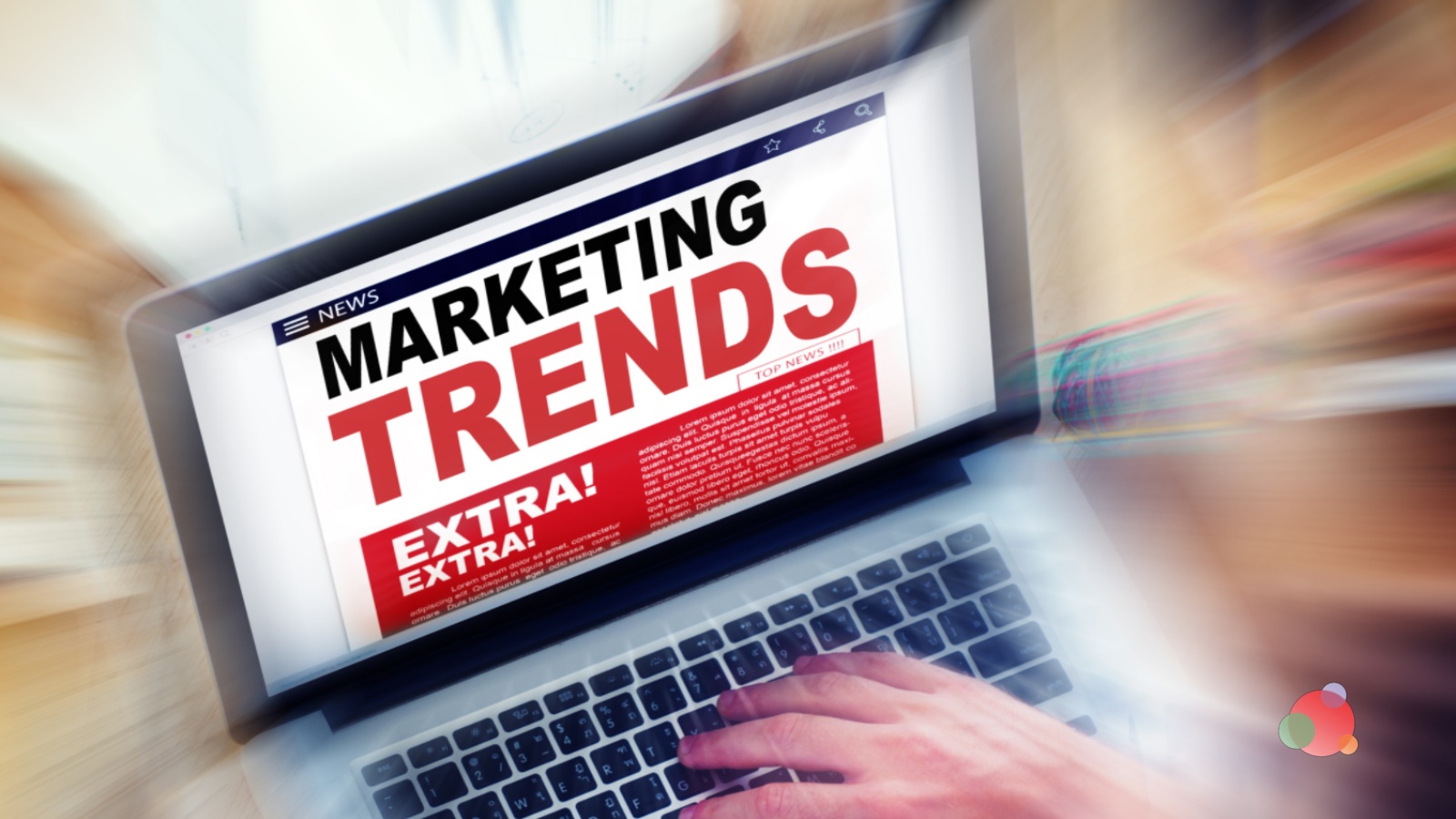 If you feel like you’re always scrambling to keep up with the latest in marketing technology trends, you’re not alone.
If you feel like you’re always scrambling to keep up with the latest in marketing technology trends, you’re not alone.
From artificial intelligence to IoT (internet of things), there’s so much going on—and so many darn acronyms—that it can it can be hard to keep track.
Recently, I spoke with clients who provide marketing technology solutions and are experts in B2B marketing.
I asked them to provide thoughts the marketing technology trends communicators should embrace in 2018.
Here’s a sample of what they had to share:
Buh, Bye Interruptive-based Advertising. Hello, Sponsorships!
Digital ad spending surpassed TV ad spending for the first time last year, according to data from the Interactive Advertising Bureau.
It’s a trend likely to continue in 2018 according to Ryan Steelberg, president at Veritone:
In 2010, we saw the emergence of on-demand media where it went from linear environment to DVR to streaming. Right now, it’s about on-demand selection and minimal interruptions.”
According to Steelberg, 2018 might even spell the end for traditional model interruptive-based advertising.
As consumer expectations and standards shift, interruptive and spot-based advertising will adjust to native and organic methods.
However, not all traditional advertising will be anticipated to meet the same fate.
Steelberg predicts:
Old school sponsorship models may become premier strategies for awareness, where a whole compilation is sponsored by one brand.
Content Personalization Provides Competitive Edge
With the internet already over-saturated with content, Ashley Walsh, VP of marketing at Formstack, expects to see hyper-personalized content based on specific data attributes become the disrupter in the marketing industry.
Most likely, this could range from different landing pages for new vs. returning website visitors.
Or it might be 15 different homepage versions visitors see based on their previous behavior.
Walsh also expects this trend to extend to digital ad content.
I envision the ability to personalize one-to-one ad messaging based on CRM data, without leveraging designers to create multiple iterations of the same design. Think old-school mail merge for your ads. If you’re not getting personal in the next three to five years, you’ll likely be providing a generic experience for your users and losing out on conversions.
With the increasing conversation surrounding artificial intelligence, Julie Lyle, CMO advisor at DemandJump expects some businesses will approach this type of personalization with the help of new AI solutions.
AI will become the standard for personalization and attribution. Savvy marketers will use AI for personalization. So how you craft your message determines how people experience your brand at every touchpoint.”
Data Hygiene Will Become Imperative
Bryan MacDonald, EVP of product and strategy at Remarketable, foresees a similar trend in the personalization of marketing.
However, MacDonald cautions marketers to consider the quality of data being used.
As marketers move toward identity resolution as a key way to power cutting-edge personalization, data hygiene becomes more important than ever. Without solid data hygiene, marketing dollars are wasted by reaching out to the wrong person via the wrong postal address, or wrong email.
MacDonald encourages marketers to take a proactive approach to data hygiene in 2018.
And especially when it comes to identity resolution, to ensure they’re targeting the correct people.
CMOs Will Spend More on Technology in 2018
Given previous trend predictions, this one shouldn’t come as a shock.
CMOs are likely to spend more on technology in 2018 according to Latane Conant, CMO at Appirio.
Conant draws her theory from past predictions made by analyst firm Gartner, which back in 2016 predicted that by 2017, CMOs would spend more on tech than CIOs.
And the numbers add up.
According to Gartner, CMOs allocated 3.24 percent of revenue to technology spending in 2016.
That is very close to the 3.4 percent of revenue CIOs earmark for IT.
Marketing technology is one of the core technology systems that run a business. Customer experience has emerged as what Gartner calls ‘the competitive battlefield.’ That technology is at the forefront of creating personalized experiences. For example, we’ve seen a rise in the need for marketing technologies that enable data-driven decision making. These are tools that can pull and analyze customer data.
Embracing the Marketing Technology Trends in 2018
Data-driven decision making and the need for personalization are not the only forces driving marketing technology trends forward.
This is evident by trend predictions and by the explosion of marketing technology solutions.
The 2017 Marketing Technology Landscape from ChiefMartec.com has grown from approximately 150 companies when first released in 2011 to more than 5,000 in 2017.
With so many marketing technology trends in the mix, it’s unlikely a one-solution-fits-all option will rise to the top in 2018.
Furthermore, your customers should always be a consideration when trying to understand which marketing technology trends work best for your business.
From sponsorships to hyper-personalized homepage content, these trends are about meeting your customers where they are.
And using technology not only to make sure that message reaches them but also resonates.
Ask yourself: what’s resonating with your customers right now?
- Is your message reaching them?
- Or, do they have to seek it out?
- How do you think your messaging could better align with their needs?
Furthermore, these are questions that don’t require AI or data personalization.
But, they should be a factor driving your marketing technology decisions in 2018.
Note: all companies listed in this article are previous or current clients of BLASTmedia.